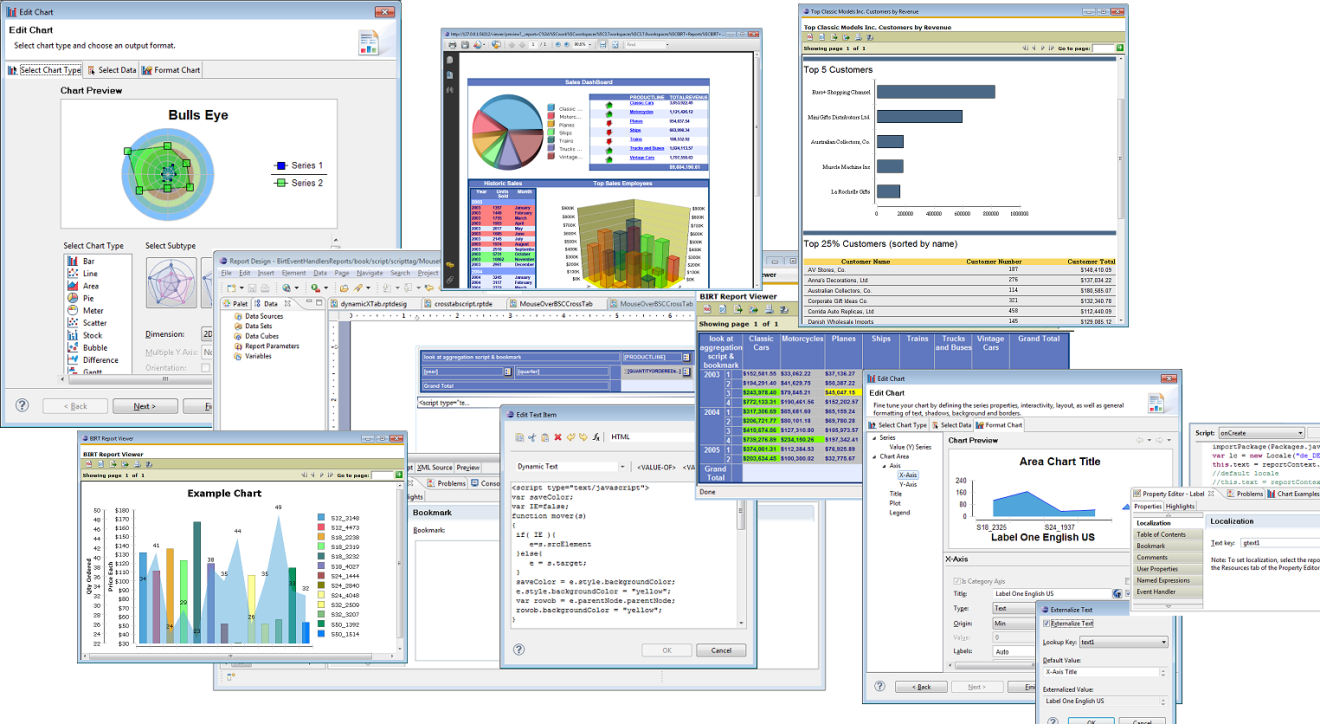By Jason Weathersby and Josh Long
Introduction
Eclipses Business Intelligence and Reporting Tools (BIRT) project is an open-source project based on the popular Eclipse IDE. The BIRT project had its first major release in the summer of 2005 and has garnered over ten million downloads since its inception. The project was started by Actuate Corporation which uses BIRT as the basis for many of its commercial products. The
BIRT project's site includes an introduction, tutorials, downloads, and examples of using BIRT.
Developers use BIRT to build and deploy reports in a Java/Java EE environment. In BIRT 3.7, a new POJO-based runtime environment is available that makes deployment of the BIRT engine much simpler. This article discusses several BIRT integration scenarios that use components from the Spring Framework.

Figure 1 BIRT Collage
The BIRT project includes the following key components:
- BIRT Designer - The developer tool used to design reports.
- Web Viewer - A sample Java web application used to deploy reports. This viewer contains a JSP-tag library that facilitates integration with existing web applications.
- BIRT Engines - The Design and Report engines used to construct, run, and render a BIRT report.
- BIRT Charts - A package that supports building and running highly sophisticated interactive charts.
The Spring framework is a popular collection of architectural and implementation approaches that makes enterprise Java development easier. Core parts of this framework are Dependency Injection and…
 Figure 1 BIRT Collage
Figure 1 BIRT Collage
